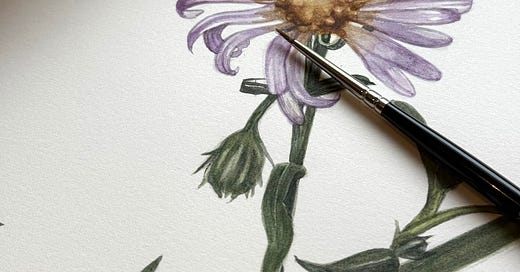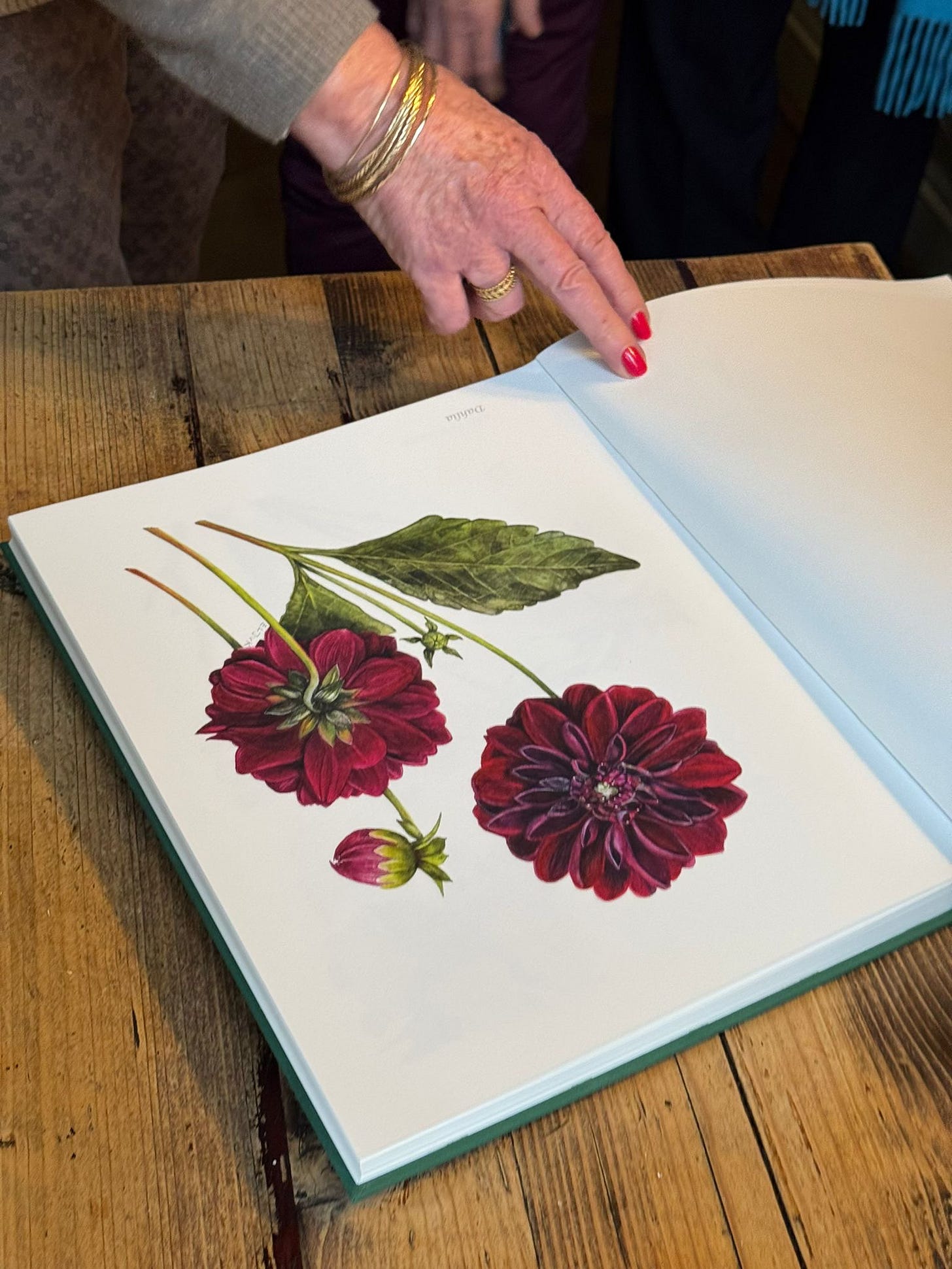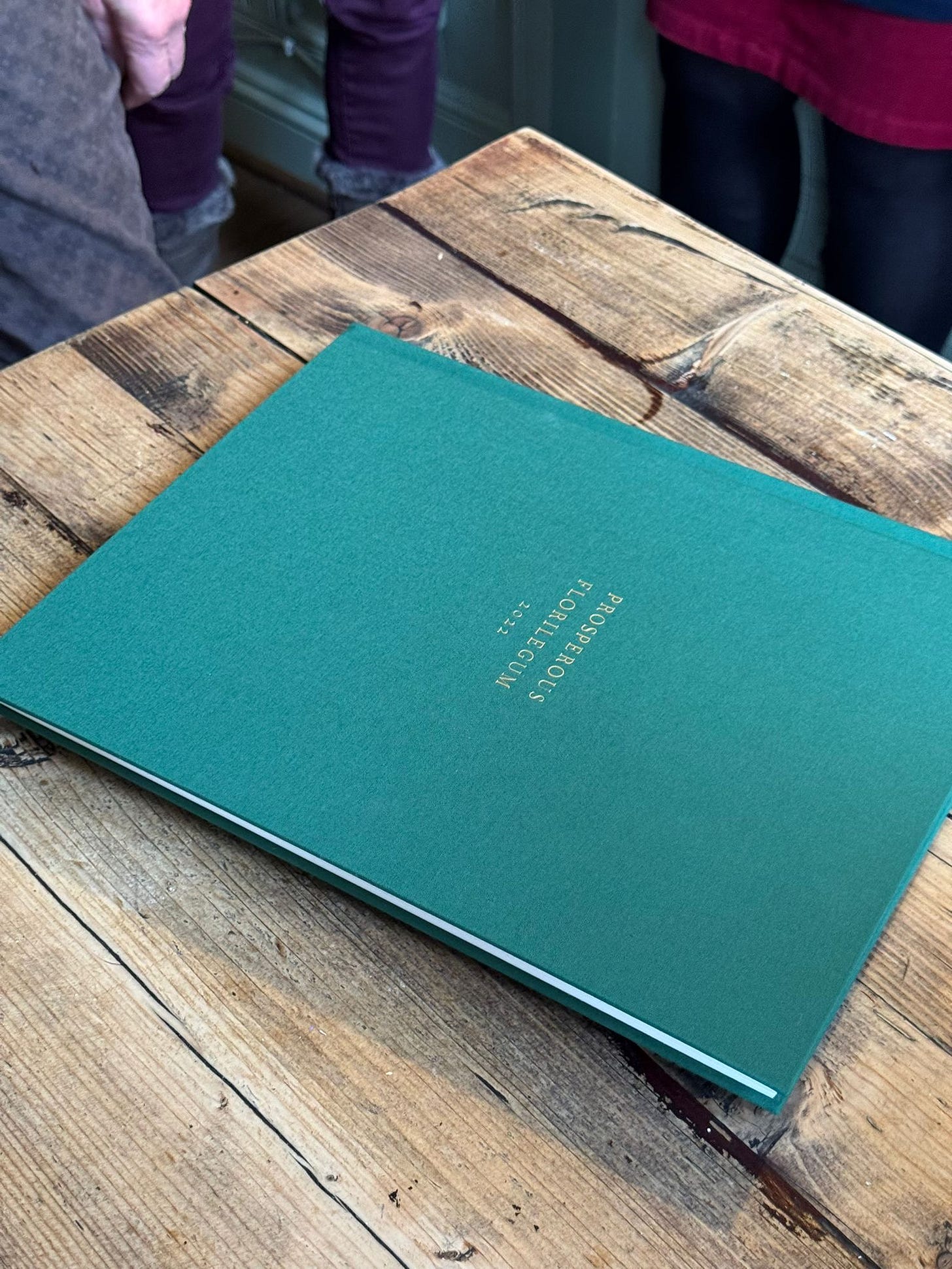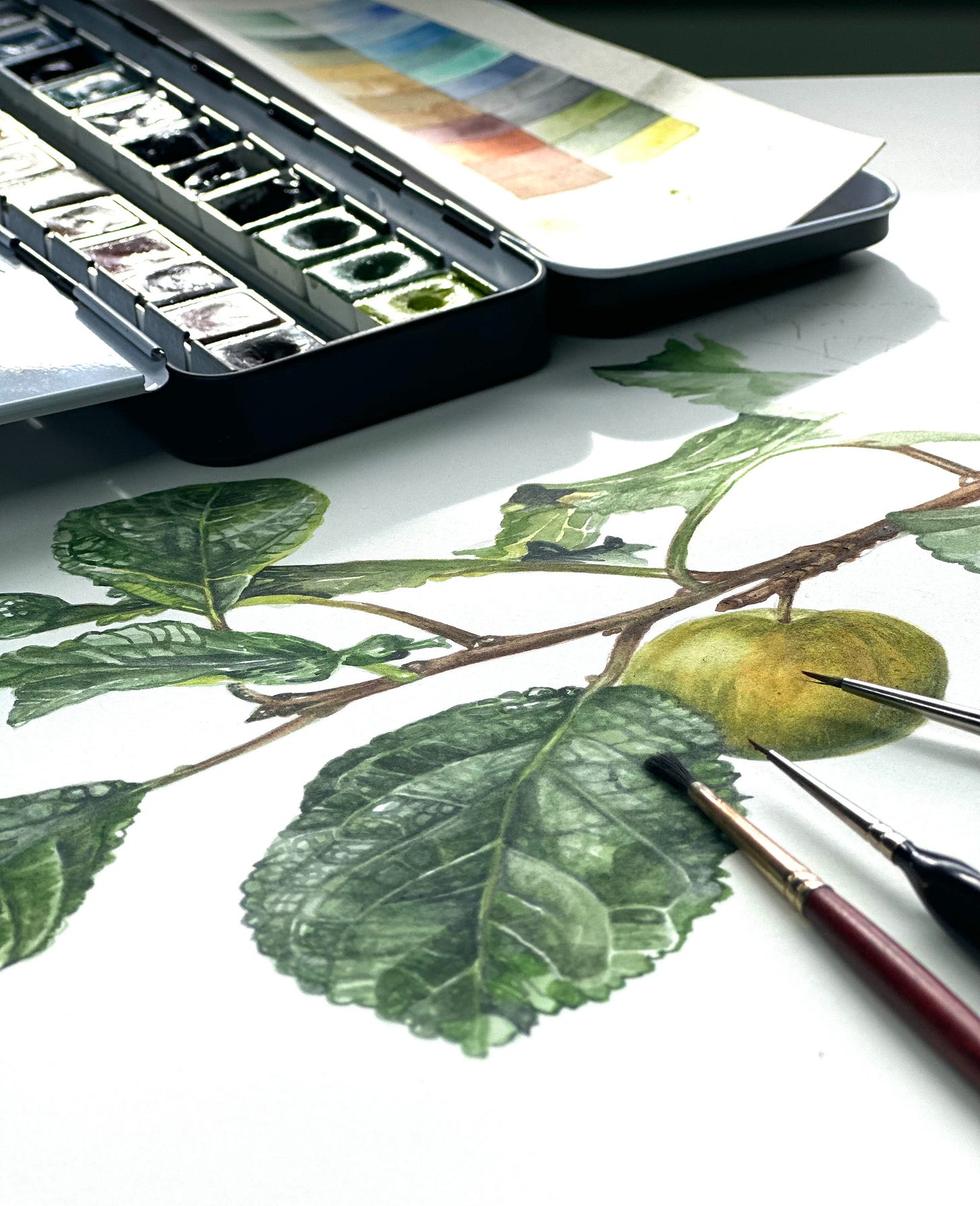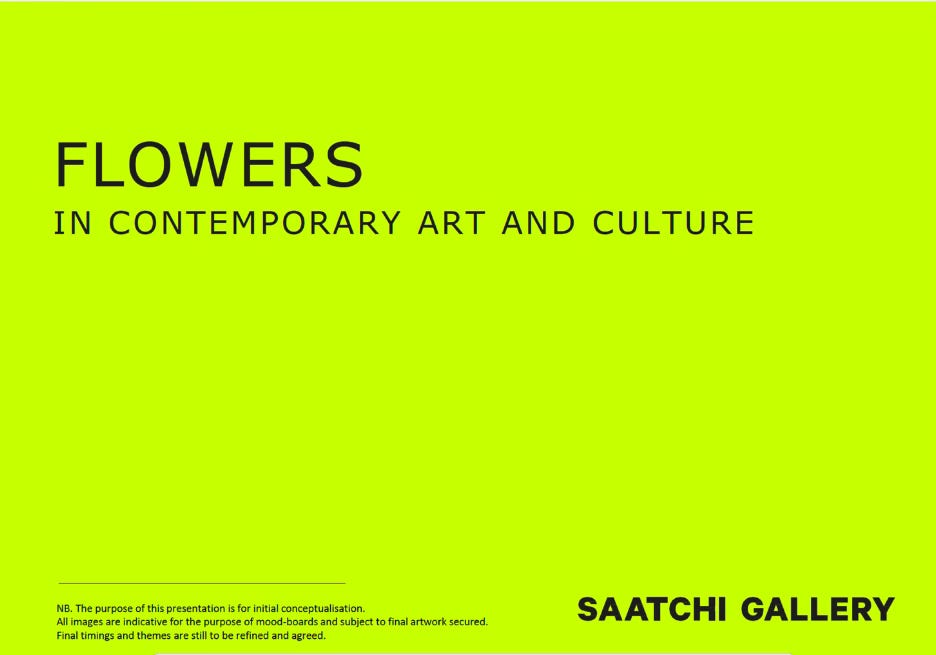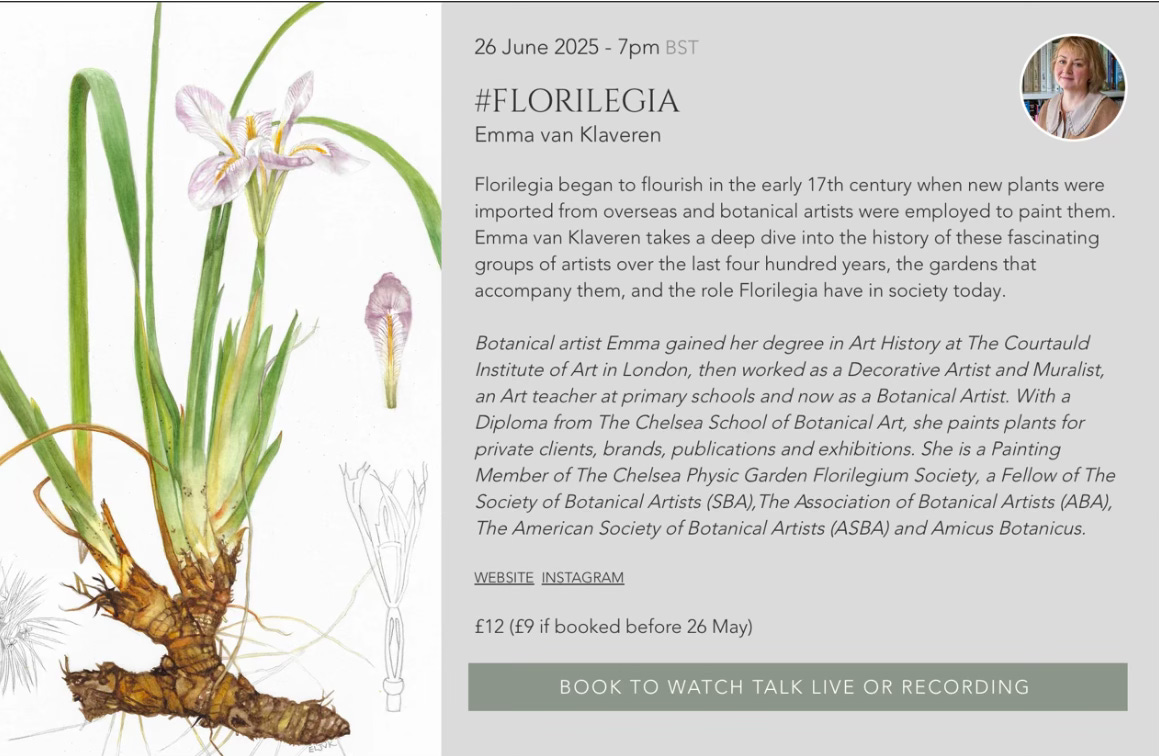welcome to behind the brush… I’m so happy you’re here. I usher in each month with a roundup of seasonal inspiration, current studio projects, notes on the botanical art world, and more. Whether you’re an artist or a botanical art fan I hope you find some inspiration in these letters. Keep an eye out mid-month for my botanical artist spotlight, too!
in the studio: I have started sketching in my perpetual journal (see above) in preparation for the next florilegium I am involved in, The National Trust’s Munstead Wood Florilegium. I have been asked to paint the Michaelmas Daisy, one of their specially selected plants from the gardens to be illustrated by botanical artists from all over the UK. The paintings will be exhibited at the annual Society of Botanical Artists Show at The Mall Galleries in May/ June. It will be a special show was it’s their 40th anniversary this year!
A little bit about Munstead Wood, its 11-acre garden surrounds an Arts and Crafts house that showcases Gertrude Jekyll’s collaboration with architect Sir Edwin Lutyens. It's the place where, from the 1890s to her death in 1932, Jekyll grew her influence on national and international garden design, transformed horticultural practice, and inspired others to become gardeners through her books and more than 1,000 articles. Pretty cool lady…
florilegium: I was also involved in another florilegium, through Amicus Botanicus, a group of botanical artists I am part of. For a long time a member wanted to paint and record the plants in her glorious Berkshire garden, a mammoth task for one person. The idea of a florilegium painted by additional artists sowed the first seeds of the Prosperous Florilegium. A collection of botanical paintings by Amicus Botanicus artists of the Prosperous plants was a great project for members to produce a contemporary Florilegium of this great garden. The owner said:
The history of Mount Prosperous is interesting. The existing house is late Georgian and stands on the site of the original, tile hung house. This latter was the house of Jethro Tull, the early eighteenth century agricultural re-former, who farmed here. He is best known for inventing the seed drill and for his semi-nal book on husbandry in which he dared to challenge some of the old beliefs. The farm still exists and is roughly the same size as Jethro Tull's, 300 acres and even the individual fields are in the same shape and size as they were on his day. The owner came to the house and garden 23 years ago. The garden was tired, municipal in style and rabbit ravaged. It had belonged to a member of the Wills family since the 1940's and they spent from May to September in Scotland which meant there was no summer garden. What we did have were the most amazing views and wonderful mature trees and Autumn colours. So the whole project to create a lovely garden, by reshaping, redesigning and of course replanting, was quite a challenge. Firstly they had to rabbit proof the garden. They extended the herbaceous borders, built a ha-ha, increased the size of the pond and designed a leafy cascade running into it and created a wood walk with a tree house and nut walk. They designed a swimming pool in the form of an Italianate formal pond, put in eye catchers, an obelisk and a pagoda to emphasise the key views and turned a field running along the beech lined drive into a wild flower meadow. Then of course my passion is roses and I had always wanted to have a walled garden. So with the added problem of deer entering the main garden, the roses had to be behind a wall. We found a suitable site and built a lovely brick and flint wall and I designed and planted the rose garden which for many years featured in David Austin's annual Catalogue. Now 15 years on it looks as if it has always been there.
There are many large and interesting gardens throughout the country and the idea is that the book can be shown as an example to owners who might also wish to have a Florilegium made of their gardens. So in this respect Amicus Botanicus might become a recognised Florilegium group who may be commissioned to paint for other gardens. My contribution was the Dahlia Arabian Night which you can see above when the owner was showing us the finished book last week and below is the cover.
BAWW: I am thrilled to have made it through to the second round of selection for The Botanical Art Worldwide Show this May at The Royal Birmingham Society of Artists’ Gallery, Birmingham, UK. In the Heritage Crops category, my painting shows a branch of greengages (see below) harvested last September at a farm in Kent. The judges’ decisions were based on :
making sure the artwork met the specific criteria required for the BAWW-2025 exhibition
the botanical accuracy of the work
the overall composition and technical skill of the work
The painting will now be mounted and sent for further judging, fingers crossed!
show: if you live in London or are passing through soon, check out this show at The Saatchi Gallery from 12th of February to 5th of May 2025. Occupying two floors and over nine major gallery spaces, this exhibition features large-scale installations, original art, photography, fashion, archival objects and graphic design exploring the ongoing influence of flowers on creativity and human expression.
talk: a date for your diaries, I will be talking all things Florilegia in Julia Trickey’s Talks Series on June 26th. I’ve already started preparing in this quiet growing season. It is fascinating to be contacting Florilegia all over the world, learning more about their work and the artists involved. Book here.
tea towels: Looking for an original hostess gift or maybe a treat for your kitchen? Grab one of my 100% cotton pineapple teatowels (£16) online or they are stocked at The Chelsea Physic Garden in London if you are visiting.
Happy painting, and look out for my next mid month post spotlighting UK botanical artist Sharon Field.

